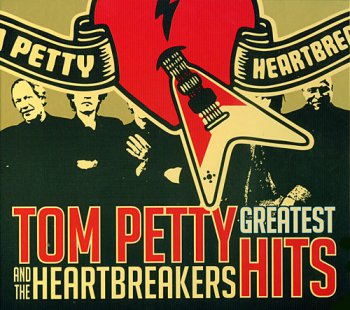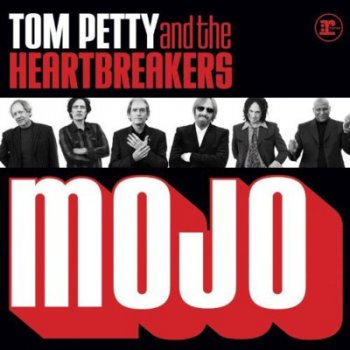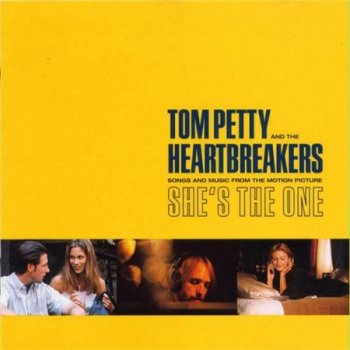Sly & The Family Stone – Original Album Classics (2010) 5CD
Artist: Sly & The Family Stone Title Of Album: Original Album Classics Year Of Release: 1967-71/2010 Label (Catalog#) :Epic,Sony Music,Legacy 88697770802 Country:: USA Genre: Funk, Soul, Psychedelic Rock Quality: FLAC (*image + .cue,log) Bitrate: Lossless Time: 04:41:29 Full Size: 1.79Gb(+3%)(covers) Info: wiki Upload: xfile.cloud

Sly & The Family Stone – Original Album Classics (2010) 5CD
Artist: Sly & The Family Stone Title Of Album: Original Album Classics Year Of Release: 1967-71/2010 Label (Catalog#) :Epic,Sony Music,Legacy 88697770802 Country:: USA Genre: Funk, Soul, Psychedelic Rock Quality: FLAC (*image + .cue,log) Bitrate: Lossless Time: 04:41:29 Full Size: 1.79Gb(+3%)(covers) Info: wiki Upload: xfile.cloud
03 10, 2025
Little Richard - Right Now! (Remastered) (2025) 1973
Исполнитель: Little Richard Альбом: Right Now! (Remastered) Жанр: Rock & Roll, Rhythm & Blues Год: (2025) 1973 Страна: USA Лейбл: Good Time Records Формат: FLAC (tracks) Official DR value: DR10 Разрядность: 24bit / 96kHz Stereo Размер: 739 MB Инфо: wiki Залито на: XFile (3% восстановление) «Exclusive for Lossless-Galaxy» Newly restored and remastered! Right Now! is a studio album by Little Richard, released in 1974. It was released without much publicity on the United Records label.
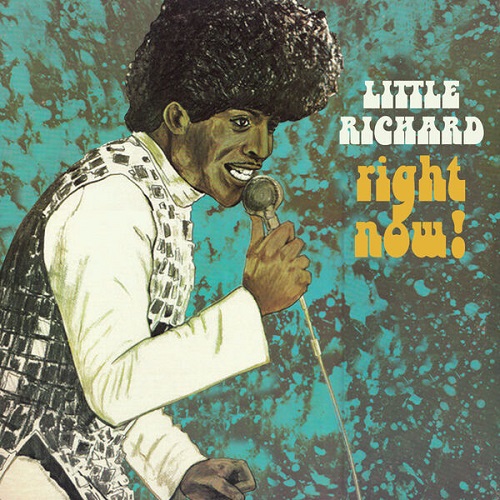
Little Richard - Right Now! (Remastered) (2025) 1973
Исполнитель: Little Richard Альбом: Right Now! (Remastered) Жанр: Rock & Roll, Rhythm & Blues Год: (2025) 1973 Страна: USA Лейбл: Good Time Records Формат: FLAC (tracks) Official DR value: DR10 Разрядность: 24bit / 96kHz Stereo Размер: 739 MB Инфо: wiki Залито на: XFile (3% восстановление) «Exclusive for Lossless-Galaxy» Newly restored and remastered! Right Now! is a studio album by Little Richard, released in 1974. It was released without much publicity on the United Records label.
03 10, 2025
Michael Schenker Group - Don't Sell Your Soul 2025
Исполнитель: Michael Schenker Group Альбом: Don't Sell Your Soul Жанр: Hard Rock, Heavy Metal Год: 2025 Страна: UK (London) Лейбл: earMUSIC Формат: FLAC (tracks) Official DR value: DR6 Разрядность: 24bit / 48kHz Stereo Размер: 577 MB Инфо: wiki Залито на: XFile (3% восстановление) «Exclusive for Lossless-Galaxy» "Don't Sell Your Soul" is the second part of a trilogy that was recorded in one piece. The first album "My Years with UFO" was followed by a sold-out tour and
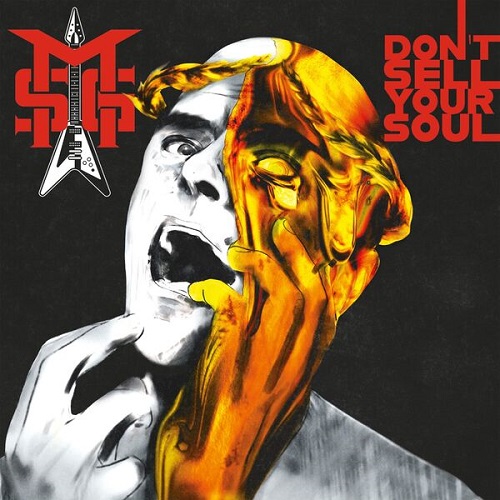
Michael Schenker Group - Don't Sell Your Soul 2025
Исполнитель: Michael Schenker Group Альбом: Don't Sell Your Soul Жанр: Hard Rock, Heavy Metal Год: 2025 Страна: UK (London) Лейбл: earMUSIC Формат: FLAC (tracks) Official DR value: DR6 Разрядность: 24bit / 48kHz Stereo Размер: 577 MB Инфо: wiki Залито на: XFile (3% восстановление) «Exclusive for Lossless-Galaxy» "Don't Sell Your Soul" is the second part of a trilogy that was recorded in one piece. The first album "My Years with UFO" was followed by a sold-out tour and
03 10, 2025
Жанры
Lossless Galaxy Release
Русская музыка
--Поп
--Рок
--Панк
--Альтернатива
--Металл
--Рэп, Хип-Хоп, R'n'B
--Джаз и Блюз
--Фолк
--Шансон, Авторская песня
--СССР
Зарубежная музыка
--Pop
--Rock
--Hard Rock
--Progressive & Art-Rock
--Pop-Rock & Soft Rock
--Instrumental Rock
--Heavy, Traditional, Industrial Metal
--Power, Gothic, Sympho Metal
--Thrash, Speed, Groove, Modern Metal
--Death, Melodic Death, Doom, Dark Metal
--Black, Pagan, Folk, Viking Metal
--Alternative
--Punk
--Disco, Eurodance
--Rap, Hip Hop, R'n'B
--Reggae, Ska, Dub
--Jazz, Blues, Soul
--Folk, Country, Ethnic
--Electronic, Ambient, New Wave
--House, Techno, Trance
Другие жанры
--New Age, Relax, Meditative & Flamenco
--Chillout, Lounge, Downtempo, Trip-Hop
--Drum & Bass, Jungle, Breakbeat, IDM
--Classical / Классическая музыка
--Soundtrack
--Музыкальные сказки
Vinyl Rip
HI-Res / DVD-Audio / DTS
--SACD
--DSD
--DVD-Audio
Сборники Lossless-Galaxy
Альбомы 2022
Альбомы 2023
Альбомы 2024
Теги
1st Press 2022 2023 2024 2025 70... AOR Black Metal Blues Blues Rock Bootleg Series Classic Rock Death Metal Discography Exclusive for Lossless-Galaxy Folk Rock Fusion Hard Rock Heavy Metal Hi-Res Japanese Edition Jazz Jazz Rock lossless Melodic Death Metal Melodic Rock Modern Electric Blues Pop Pop Rock Power Metal Prog Rock Progressive Metal Progressive Rock Psych Rock Psychedelic Rock Rock SACD Symphonic Metal Thrash Metal Дискографии от KoGGaN
Архивы
Опрос
В каком формате хотели бы видеть релизы на сайте ?
 Автор: LeddZepp, 16 июня 2020, Комментариев: 0, Просмотров: 680
Автор: LeddZepp, 16 июня 2020, Комментариев: 0, Просмотров: 680Tom Petty and the Heartbreakers - Tom Petty and the Heartbreakers (1976)
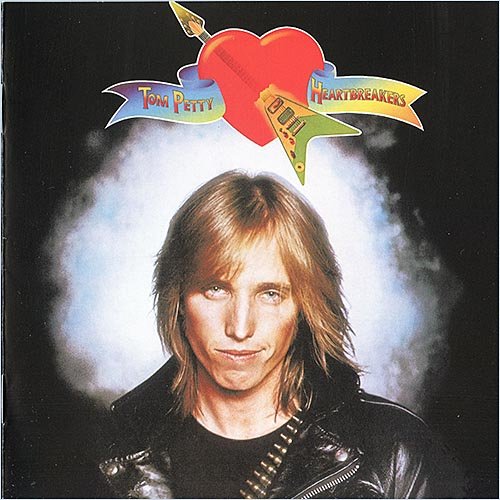
Year: 1976, (CD 2002)
Label: Gone Gator and Warner Bros. Records (Europe), 8122-78177-2
Style: Rock
Country: 1976–2017, Gainesville, Florida, U.S.
Time: 30:54
Format: Flac Tracks 16/44,1 kHz
Size: 208 Mb
В 1961 году, когда Элвис Пресли оказался во Флориде, его увидел местный 10-летний паренек по имени Том Петти (р. 20 октября 1950). Вдохновленный творчеством короля рокн-ролла, мальчишка сразу же после этого взялся за гитару и уже с тех пор с ней не расставался. В 17 лет Петти бросил школу и влился в команду "Mudcrutch" (в оригинале "Sundowners"), членами которой являлись еще два будущих "хартбрейкера", гитарист Майк Кэмпбелл и клавишник Бенмонт Тенч. Добравшись до Лос-Анжелеса, группа подписала контракт, но после выпуска всего одного сингла скоропалительно распалась.
Какое-то время каждый из троицы пробовал работать по отдельности, однако в 1975 году парни воссоединились и вместе с басистом Роном Блэром и барабанщиком Стэном Линчем организовали бэнд "Tom Petty & The Heartbreakers". Стиль новорожденной рок-единицы базировался на кантри, блюзе и фолк-роке и носил отпечатки влияния таких исполнителей как Боб Дилан, Нил Янг и "The Byrds". Дебютный альбом американская публика поначалу проигнорировала, но после того как "сокрушители сердец" похедлайнили в Англии, и пластинка вошла в тамошний Топ 30, на нее обратили внимание и дома.
Сингл "Breakdown" угодил в сороковку "Billboard", а песню "American Girl" подхватили AOR-станции. Второй альбом, "You're Gonna Get It!", также очутился в Топ 40, однако закреплению успеха помешали внешние обстоятельства. Лейбл "Shelter", на котором группа выпустила две первых пластинки, был поглощен фирмой "MCA Records", а когда Петти захотел переделать контракт, новые хозяева не пошли на сделку, считая требования музыкантов непомерными.
В итоге группа Тома оказалась на грани банкротства, и лишь после напряженных переговоров коллектив был принят на дочернее подразделение "MCA", "Backstreet Records".
Выпущенный в октябре 1979-го диск "Damn The Torpedoes" стал для "Tom Petty & The Heartbreakers" существенным шагом вперед. Песня "Don't Do Me Like That" поразила горячую десятку, ненамного от нее отстала композиция "Refugee" (15-е место), а сам альбом простоял семь недель на второй ступеньке "Billboard". Тиражи пластинки взмыли до шестизначных высот, и компания "MCA" решила сорвать дополнительный куш при выпуске "Hard Promises". Однако Петти вновь ввязался в спор с лейблом и на этот раз вышел победителем, оставив цену альбома на среднестатистическом уровне. Четвертая полнометражка также обрела платиновый статус, а самой известной вещицей с нее стал открывашка "The Waiting". В 1982 году Рона Блэра сменил Хауи Эпстейн, причем голос нового басиста сразу же сделался неотъемлемой частью вокальных гармоний "Heartbreakers".
Альбом "Long After Dark" принес команде очередное попадание в десятку, однако в следующей программе Том и компания решили отойти от фирменного стиля. Пригласив на роль продюсера Дэйва Стюарта из "Eurythmics", коллектив взялся за эксперименты с ньювэйвом, соулом и нео-психоделикой. Впрочем, музыканты все сделали со вкусом, и поэтому и платина, и Топ 10 альбому "Southern Accents" были обеспечены. В 1986-м и 1987-м "Tom Petty & The Heartbreakers" работали на сопровождении у Боба Дилана, а знаменитый фолкстер позже сделал ответный реверанс, поучаствовав в записи трека "Jammin' Me" для пластинки "Let Me Up (I've Had Enough)".
В конце декады студийная деятельность группы была приостановлена, хотя почти все "сердцееды" отметились на сольнике Тома "Full Moon Fever". Также Петти был задействован в суперпроекте "Traveling Wilburys", но в 1991-м его собственная команда вернулась с программой "Into The Great Wide Open". Здесь группа вошла в тесный контакт с Джеффом Линном, пригласив того в качестве продюсера, и видимо поэтому песни "Heartbreakers" приобрели некоторую схожесть с творчеством "ELO".
Альбом закрепил команду на платиновых рубежах, а вышедший в 1993-м сборник "Greatest Hits" побил все ее личные рекорды, разойдясь 10-миллионным тиражом. Данная компиляция завершила сотрудничество коллектива с "MCA", после чего Петти перетащил своих партнеров на "Warner Bros". В 1994-м вышел второй сольник Тома, и в это же время Линча сменил Стив Ферроун, а несколько ранее в команде появился еще один новый игрок – Скотт Терстон (гитара, гармоника, синтезатор). Если саундтрековая пластинка "She's The One" имела относительно скромный успех, то спродюсированный Риком Рубином диск "Echo" все же зацепился за конец горячей десятки.
В Топ 10 побывал и альбом "The Last DJ", на котором басовые партии вновь исполнял Рон Блэр. Причиной отставки Хауи стала усилившаяся наркозависимость, которая уже в 2003 году свела бас-гитариста в могилу. В 2006-м Петти при участии Кэмпбелла и Линна выпустил третий сольник ("Highway Companion"), а спустя четыре года вернулись и "хартбрейкеры", вытащив из студии альбом "Mojo". Диск вышел под флагом "Reprise Records" и представлял собой попытку группы приблизиться к стандартам южного джемового блюз-рока.
(rockfaces.ru; Last update 23.06.10)
01. Rockin' Around (With You) (02:29)
02. Breakdown (02:44)
03. Hometown Blues (02:14)
04. The Wild One, Forever (03:02)
05. Anything That's Rock 'n' Roll (02:24)
06. Strangered In the Night (03:33)
07. Fooled Again (I Don't Like It) (03:49)
08. Mystery Man (03:03)
09. Luna (03:58)
10. American Girl (03:32)





При желании можно посмотреть все мои публикации на сайте. Приятного прослушивания. Жмём и смотрим (Click to see all of my posts)!
Внимание! У Вас нет прав для просмотра скрытого текста.
Похожие новости:
Комментарии отсутствуют
Добавить комментарий!
Информация
Посетители, находящиеся в группе Гости, не могут оставлять комментарии к данной публикации.

![Tom Petty & The Heartbreakers - The Complete Studio Albums Volume 1 - 1976-1991 [Remastered Limited Edition] (2016)](/uploads/posts/2017-01/thumbs/1484133034_1.jpg)
